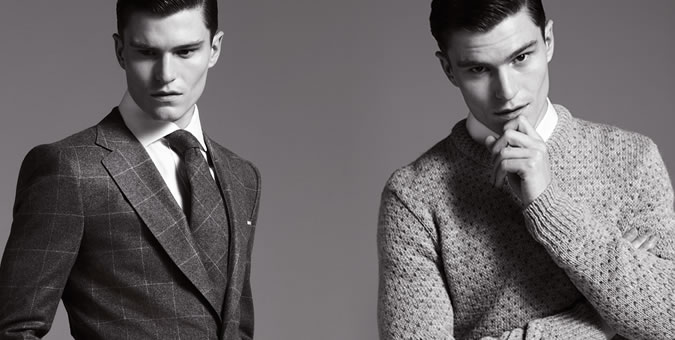Introduction
Brands are everywhere. Everything you buy, drink, eat, watch or look at is, in some way, a branded item. When you buy the own brand goods from your local supermarket you might well think that you’re sticking two fingers up at that hateful consumerist, marketing machine when in actual fact you are still investing in some kind of brand, it’s just not so well recognized.
It doesn’t matter if you buy your soy milk, chi tea latte with cinnamon on top from Starbucks or your local independent coffee shop – you’re still buying into a brand, and somewhere along the line a marketing executive will have had his sticky little branding paws all over it.
However, this would suggest that all brands are exactly the same – yet nothing could be further from the truth. Brands are far from equal in almost every sense and there can be stratospheric differences between one brand and the next. From size to quality, intensity to purpose, brands are about as different from one another as we are from giraffes.
Clothes, of course, are all about the brand. Marketing strategies are what make a company successful and when it comes to looking good and dressing well, it’s ALL about the image.
The Debate
I first stoked the fires of this debate a couple of years ago. Back then I considered how we associated particular brands with certain types of people; the issue of location was raised and I pushed the idea of looking past the logos and negative associations in the name of making the most of everything a brand had to offer.
This time we’ll be looking at how brands have developed, along with how this may have changed our perception of these particular brands and the way we consume them and/or dress with them. We will also reiterate the idea that we shouldn’t totally discount brands due to a tiny proportion of their clothing, the associations of the people that wear them or their history.
How Have Brands Developed?
In the last couple of years there has been a huge shift in the way brands are marketed and the way they create their image. Styles and tastes have also changed and a shop’s focus must change with it. As the consumer moves on to something new the brand must follow.
With this in mind, it seems the brands the FashionBeans man might have traditionally ignored have begun to drop off the radar. For the most part, the garish branding and big logos that appalled us previously have started to disappear.
The brash signature pieces from the likes of Abercrombie & Fitch, Hollister and Jack Wills are seen less and less, whilst other youth-targeted brands like Superdry, Diesel and G-Star are taking a much more grown up approach to their collections – ditching the lurid designs plastered on the back of their jeans and clothes in favor of timeless, classic pieces.
 There has been a shift from bold & brash to clean & classic at brands like Superdry (top) and G-Star (bottom) in recent seasons
There has been a shift from bold & brash to clean & classic at brands like Superdry (top) and G-Star (bottom) in recent seasons
Key Transformation: Marks & Spencer
We’re also seeing a huge change at some of our most well-known high street retailers. Marks & Spencer have turned themselves right around in the past couple of seasons and are now releasing collections that rival some of the most established and respected clothing brands on the market.
Combine this new, more youthful approach to design with the kudos David Gandy lends as the face of their menswear campaigns and you’ve got yourself a serious contender. Shaking off some of the ‘where your dad shops’ image has been crucial to their new found appeal and the development of their product range.
 Marks & Spencer have turned around their reputation thanks to the help of David Gandy (top) and a new, more youthful design ethos (bottom)
Marks & Spencer have turned around their reputation thanks to the help of David Gandy (top) and a new, more youthful design ethos (bottom)
Forgotten & Budget Brands
At the same time, many forgotten brands have returned to mainstream fashion’s consciousness and regained their position at the forefront of the industry – the likes of Ben Sherman and Dr. Martens immediately spring to mind.
Budget retailers are also on the up, with Next, New Look, Matalan and Primark all pushing strong collections and offering some excellent pieces at a much lower price point. No longer are we confined to a limited number of stores, there is now a wealth of brands and retailers to shop at, and it looks like things will only get better.
 Budget retailers such as Matalan (Top Row), Primark (Second Row), Next (Third Row) & New Look (Bottom Row) have become genuine contenders for our attention.
Budget retailers such as Matalan (Top Row), Primark (Second Row), Next (Third Row) & New Look (Bottom Row) have become genuine contenders for our attention.
However, more worryingly is the loss of good brands and changes wrought in previously respected companies, which are now fighting for survival. In the case of Aubin & Wills (which ceased trading at the end of 2012) the issue was a parent company wishing to promote another side of the business.
Yet with other brands there has been a marked reduction in quality, quantity and design; perhaps a symptom of a poor economy and an example of the shift in styles and attitudes towards menswear that we have seen in the last couple of years.
The brand game has definitely changed. There is a push towards a more mature, classic style across the board, whilst still retaining an appreciation of alternative looks and fashion forward thinking. Think Urban Outfitters advocating streetwear and Topman continuing to push boundaries in the search for the next big thing.
To use an often overused moniker, the shape of the ‘Topman Mannequin’ has developed into something completely new – but how does this affect the way we dress?
The Effect On Us
So if brands have changed and styles have changed, then the way we think about, consume and buy into these things must have changed as well.
Trainers/sneakers are an excellent case in point and show a notable shift in consumer attitude toward brands. I mean, at what point did trainers specifically designed for running become the must-have footwear style for high level fashionistas and well-dressed men the world over?
Where once we might have turned our noses up at the idea of wearing a pair of New Balance 574s,
Air Max in particular have undergone some kind of wild metamorphosis that has seen people completely ignore the fact that they are wearing the same trainers as everyone else, including some rather unfavorable sub-cultures, whilst the sheer number of colorways and special editions being released shows just how much brands like
 Recent iterations of
Recent iterations of
With the mainstream fashionable image continually evolving, brands will inevitably fall in and out of vogue. Places like Urban Outfitters, previously populated by hipsters and those looking for alternative items, are now being frequented by people more usually associated with Topman and River Island. AllSaints seems to be dropping off the radar, snap backs are in and the sports trainer is big.
As some stick to the high street, others will begin to look elsewhere for new and emerging brands that they can call their own. There has also been a huge shift towards quality and an emphasis on fit and finish – people want to spend more on their clothes to look good.
Looking Past The Brand
As regular FashionBeans readers will be aware, our house style places emphasis on unbranded, clean and simple clothes that are designed to help you build the perfect capsule wardrobe with minimal fuss and maximum impact. We will typically steer clear of heavily branded clothes and garish logos and avoid trademark styles that go against our ethos.
But should we discount companies, just because of their choice of branding? No, certainly not. Jack Wills are a prime example. Get past the tracksuits, the hoodies and the blasphemous closure of Aubin & Wills (who were by far the better brand) and you will find a selection of excellent knitwear, on trend chinos/trousers and fantastic outerwear (they even collaborated with Gloverall for AW12), all made to a high standard and at a reasonable point.
I would also like to highlight the importance of not discarding a brand just because you don’t like it or it doesn’t fit your unique style. Every brand has its purpose and its intended market and I think we are often guilty of believing every single brand should cater specifically to our own personal needs.
Furthermore, your opinion on a particular brand shouldn’t be influenced by the people that wear it or the occasional mistakes they make. For example, consider the stigma attached to Burberry during the early to mid 2000s after the media linked a small minority of football hooligans with the brand’s signature check pattern.
Fast-forward to today and Burberry are considered by the entire industry as one of Britain’s finest fashion exports. They are always one of the most anticipated shows at global fashion weeks, models/celebrities clamor to be part of their ad campaigns and the signature Burberry check is now considered a status symbol, rather than a mark of the unfashionable. What’s worse is that in terms of quality, nothing has changed. The brand simply clamped down on the replica/knock-off market, repositioned itself and altered public perception with the help of the genius that is Christopher Bailey.
With all this in mind, how you wear your clothes is much more important than what you wear. Companies will have a signature style that epitomizes their desired image far more than their branding, so we should all try to look past the logos and stereotypes and open ourselves up to the possibility of trying labels you may have previously dismissed instantly.
Final Word
Brands are an unavoidable part of our lives; they are everywhere and in everything. Many household names have undergone huge changes in the past couple of years and transformed themselves into real contenders for our attention. But now it’s time for you to weigh in on the debate:
- How do you think our high street brands have developed in the past couple of years?
- Do you think all the changes have been good?
- How do you think they have affected the way we shop and dress?
- Do you purposely avoid any brands?
- Might you rethink your position now you’ve read this article?
Let us know in the comments section below.







